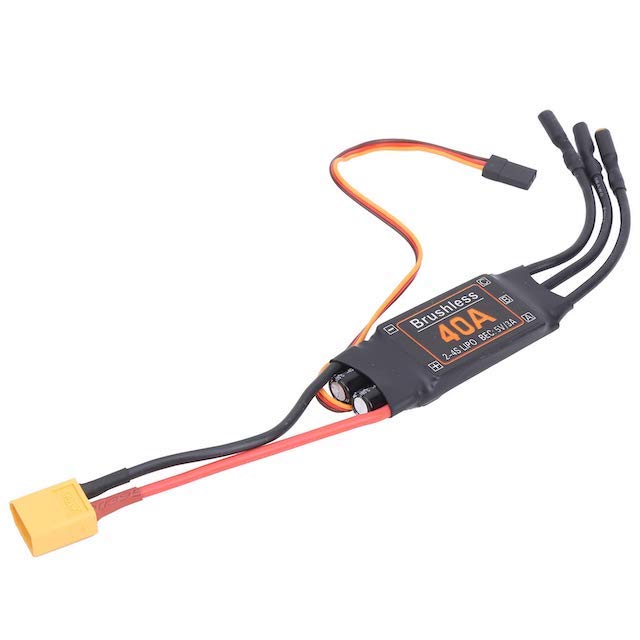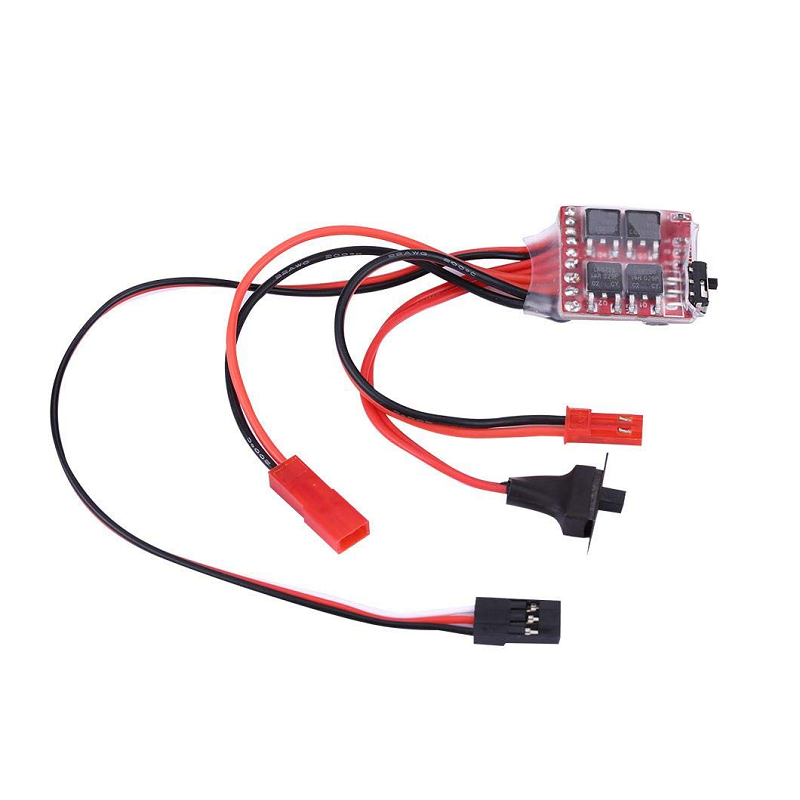Introduction
Electronic speed controllers (ESCs) are crucial components in the world of electric motors and drones. They regulate the speed of the motor by adjusting the power input, making them essential for smooth and efficient operation. This article will explore the ins and outs of electronic speed controllers, from their basic functionality to advanced features and applications in various industries.
Part 1: Understanding Electronic Speed Controllers
Level 1: What is an Electronic Speed Controller?
At its core, an electronic speed controller is an electronic circuit that controls the speed and direction of an electric motor. It works by varying the voltage and current supplied to the motor, thereby adjusting its speed.
Level 2: Components and Operation
An ESC consists of several key components, including a microcontroller, power stage, and pulse width modulation (PWM) circuit. The microcontroller interprets signals from a remote control or flight controller and makes adjustments to the power stage to control the motor’s speed and direction.
Part 2: Types of Electronic Speed Controllers
Level 1: Brushed vs. Brushless ESCs
There are two main types of ESCs: brushed and brushless. Brushed ESCs are designed for DC motors with brushes, while brushless ESCs are used with brushless motors. Each type has its own advantages and applications.
Level 2: Multirotor ESCs
In the world of drones and multirotors, specialized ESCs are used to control the speed of multiple motors simultaneously. These ESCs are often equipped with additional features such as self-leveling and stability control.
Part 3: Advanced Features and Functions
Level 1: BEC and SBEC
Many modern ESCs are equipped with battery elimination circuit (BEC) or switch mode BEC (SBEC) to provide power to the receiver and other onboard electronics. This eliminates the need for a separate battery pack.
Level 2: Programmable ESCs
Some ESCs come with programming capabilities that allow users to adjust various parameters such as throttle range, timing, and braking. This can optimize the performance of the motor for specific applications.
Part 4: Applications of Electronic Speed Controllers
Level 1: RC Vehicles and Aircraft
ESCs are widely used in remote-controlled (RC) cars, boats, helicopters, and airplanes to regulate motor speed and direction. They are essential for precise control and maneuverability.
Level 2: Industrial and Commercial Applications
In industrial and commercial settings, ESCs are used in a wide range of applications, including conveyor systems, robotic arms, and automated machinery. They provide precise and efficient control over electric motors.
Part 5: Tips for Choosing and Using Electronic Speed Controllers
Level 1: Selecting the Right ESC for Your Application
When choosing an ESC, factors such as motor type, voltage and current ratings, and additional features should be taken into consideration. Understanding the specific requirements of your application is crucial for selecting the right ESC.
Level 2: Installation and Setup
Proper installation and setup of an ESC are essential for optimal performance and longevity. This includes soldering connectors, calibrating the ESC, and configuring it to work with your remote control or flight controller.
Part 6: Types of Electronic Speed Controllers
There are several types of electronic speed controllers (ESCs) available in the market, each designed for different applications. The most common types include brushed ESCs, brushless ESCs, and programmable ESCs. Brushed ESCs can control the speed of DC brushed motors. They are commonly used in radio-controlled cars, boats, and aircraft. Brushless ESCs, on the other hand, are used for brushless motors, which are becoming increasingly popular due to their higher efficiency and power. They are often used in drones, electric skateboards, and electric bikes.
Programmable ESCs allow the user to customize various settings such as throttle range, brake strength, and motor timing, making them suitable for advanced applications such as competitive racing or industrial automation. In addition to these main types, there are also ESCs designed for specific uses, such as high-voltage ESCs for industrial machinery or waterproof ESCs for marine applications.
Choosing the right type of ESC for your application is crucial to achieving optimal performance and efficiency. Factors to consider include motor type, voltage and current ratings, and the specific requirements of your project.
Part 7: Installation and Calibration of Electronic Speed Controller
The installation and calibration of an electronic speed controller (ESC) are important steps in ensuring its proper functioning and optimum performance. To install an ESC, begin by connecting the power leads to the battery and the motor leads to the motor. Ensure that all connections are secure and insulated to prevent short circuits.
Once the ESC is installed, it needs to be calibrated to match the throttle range of your transmitter. This usually involves putting the transmitter in full throttle, powering up the ESC, then moving the throttle to the minimum position. This will set the ESC’s maximum and minimum throttle values to match the transmitter’s output.
After calibration, it is important to test the ESC to ensure it is operating correctly and that the motor is spinning in the intended direction. Make any necessary adjustments to the throttle range or direction reversal settings in the ESC’s programming menu. By following the manufacturer’s instructions and paying attention to details during installation and calibration, you can ensure the reliable and efficient operation of your ESC.
Part 8: Maintaining and Troubleshooting Electronic Speed Controllers
Electronic speed controllers (ESCs) require regular maintenance to ensure their longevity and proper function. Here are some tips for maintaining and troubleshooting ESCs. To maintain an ESC, regularly inspect the power and motor connections for any signs of wear or damage. Clean any accumulated dirt or debris, and ensure that the cooling fins or heatsinks are free from obstruction to prevent overheating.
Additionally, it is important to follow the manufacturer’s recommendations for the operating conditions of the ESC. Excessive heat, overloading, and voltage spikes can all contribute to premature ESC failure. When troubleshooting an ESC, start by checking the power source and connections. If the ESC has a built-in BEC (battery elimination circuit), check the voltage output to ensure it is within the specified range for your receiver and servos.
If the ESC is not responding to throttle input, check the transmitter and receiver for proper binding and signal transmission. Finally, if the ESC is still not functioning, consult the manufacturer’s documentation for specific troubleshooting steps, or consider seeking professional assistance. Regular maintenance and proper troubleshooting techniques can help prolong the life of your ESC and keep your electronic systems running smoothly.
Conclusion
In recent years, ESC technology has advanced significantly, with the development of brushless ESCs that are more efficient, reliable, and durable compared to traditional brushed ESCs. There are several types of ESCs available on the market, each designed for specific applications and power requirements. Brushless ESCs are also able to deliver higher power output and better heat dissipation, making them ideal for high-performance applications such as racing drones and electric cars.
Overall, electronic speed controllers play a crucial role in modern electric propulsion systems. Providing the precise and responsive control needed for a wide range of applications. As technology continues to evolve, ESCs become even more advanced and sophisticated, offering improved efficiency, reliability, and performance.
Electronic speed controllers play a vital role in controlling the speed and direction of electric motors in various applications. Understanding their functionality, types, features, and applications is essential for anyone working with electric motors or drones. By choosing the right ESC and using it properly, you can optimize the performance and efficiency of your motorized systems.












